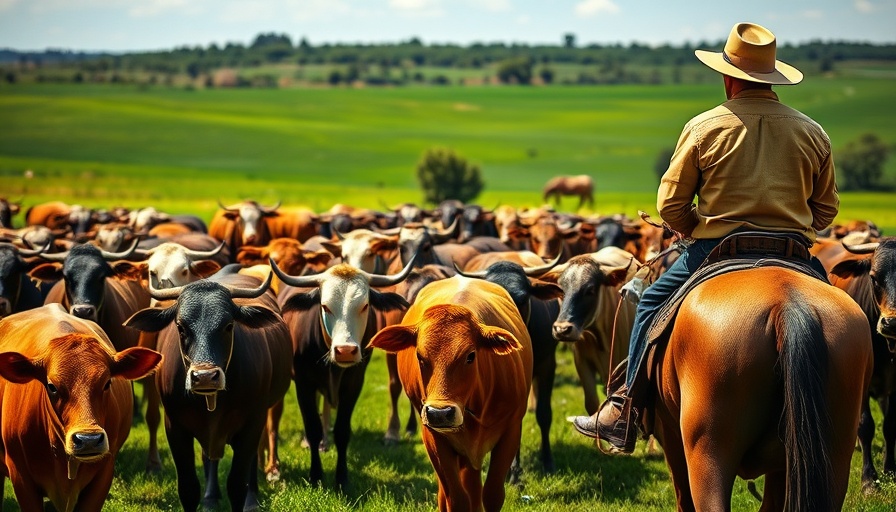
Flesh-Eating Parasite Plagues Southern Mexican Ranchers
In the southern region of Chiapas, Mexico, ranchers are facing a serious threat from the New World screwworm, a flesh-eating parasite wreaking havoc on livestock and prompting the U.S. to suspend cattle imports. This situation illustrates the environmental and economic vulnerabilities that can arise from biological threats, raising concerns for ranchers and agricultural authorities alike.
Historical Context and Background
The current infestation in Chiapas follows decades of sporadic outbreaks of the New World screwworm, which devastated livestock populations in the 1980s and 1990s. During those times, the economic impact was significant, leading to massive losses for ranchers and distress among local communities. As these recent cases emerge, they remind ranchers of a painful past, illustrating how quickly history can repeat itself when ecological checks are insufficient.
Mechanisms of Spread and Economic Implications
The rapid spread of the New World screwworm fly is worrisome, particularly because its maggots can contribute to the rapid deterioration of livestock health. Every open wound on an animal’s body becomes an attractive site for the fly to lay eggs, leading to dangerous infestations that can swiftly incapacitate or kill the host. The U.S. is apprehensive, fearing that if the parasite crosses the border into Texas, it could result in substantial economic losses, similar to those experienced in past outbreaks.
The Role of Veterinary Care and Treatment Challenges
Veterinarians like Alfredo Chávez are on the front lines, responding to the infestation. Chávez, who returned to Chiapas after studying in the U.S., has witnessed a rise in screwworm cases, increasing the demand for veterinary services. As the cost of medications rises, ranchers often resort to home remedies, such as gasoline or lime, to relieve infected livestock—a tactic that comes with its own risks. Careful monitoring and repeated treatments are essential, further complicating the challenge for ranchers already burdened by economic pressures.
The U.S. Response and Future Strategies
To combat the crisis, the Mexican government is collaborating with U.S. officials to establish a facility in Chiapas that will produce sterile flies. This strategy, based on the Sterile Insect Technique (SIT), has been effective in previous interventions. While the facility is not expected to open until next year, it represents a crucial step forward in halting the spread of this damaging parasite. Until then, the ranchers of Chiapas must navigate this crisis with limited resources and often face mounting pressure.
The Community’s Resilience and Adaptation
Despite the severity of the current situation, the community is showcasing remarkable resilience. Ranchers are actively seeking solutions, forming cooperatives to share knowledge and resources, and tapping into local expertise to tackle the problem head-on. Such solidarity illustrates the power of communal action and highlights how shared challenges can forge stronger bonds among workers in agriculture.
Conclusion: Action is Needed Now
As these challenges escalate, it becomes imperative for local and international stakeholders to engage with ranchers to develop comprehensive strategies that address not only the immediate threat of the New World screwworm but also larger systemic vulnerabilities within agricultural practices. The fate of Chiapas’ ranchers hangs in the balance, and swift, collaborative action is essential to protect their livestock and livelihoods.
 Add Element
Add Element  Add Row
Add Row 



Write A Comment